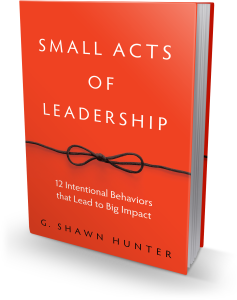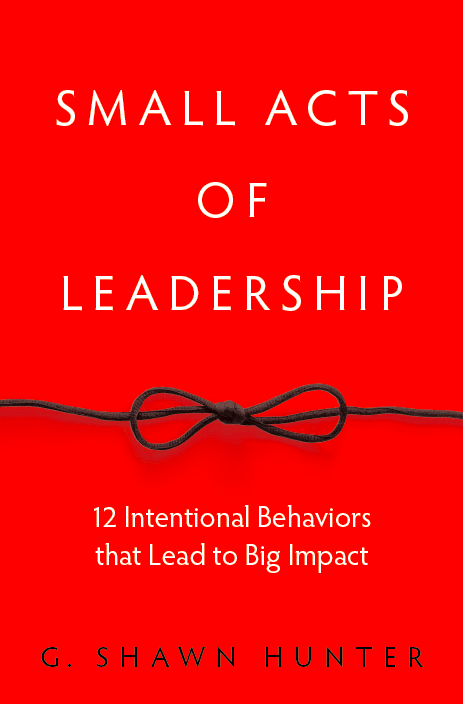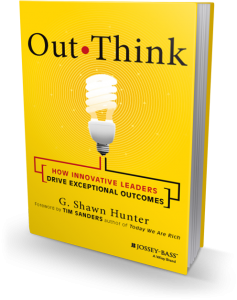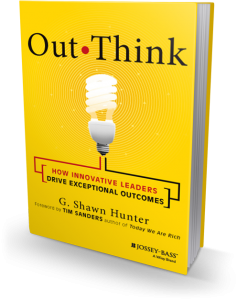A Small Shift to Ask More Powerful Questions
Typewriters with ribbons, developed in the 1950s, were excellent at speeding up typists, but not so good at erasing their mistakes. Bette Nesmith Graham was a typist by day, and a painter by night. She wondered, “What if I could cover up my typing mistakes the same way I cover up my painting mistakes?”
She mixed up a batch of quick-drying white paint, and used it to wipe out her typing mistakes. Almost immediately, she was handing it out to everyone in the typist pool. That product later became Liquid Paper, which she sold for almost $50 million.
In 1965, Dwayne Douglas, a football coach at the University of Florida, watched his players run and sweat and drink gallons of water for hours in the hot Florida sunshine. Squinting into the sun, he wondered, “Why aren’t the players peeing more after the games?” He asked a kidney researcher at the university that question, who then developed a drink to replenish electrolytes. The result became Gatorade, named after the Florida Gaters.
In 1943, while on vacation in New Mexico, Edwin Land took a family portrait with his camera. His daughter asked immediately, “You took the picture. Can I see it now?” Which led Land to ask himself the question, “What if you could somehow have a darkroom inside a camera?” The answer to that question became the Polaroid Camera.
When you think about it, everything starts with a question. I have been collaborating for the past year with Marilee Adams, Ph.D., author of Change Your Questions, Change Your Life. She has poignant stories of how simple questions, when reframed, can change the course of history.
Consider the subtle question shift, from “How do we get ourselves to water?” to “How do we get water to us?” That question shift is the difference between nomadic cultures moving themselves to reach water, to civilizations using technology to bring water to the people. Roman aqueducts, irrigation and indoor plumbing are the cornerstones of modern infrastructure, and all an answer to the question, “How do we bring the water to us?”.
“A paradigm shift occurs when a question is asked inside the current paradigm that can only be answered outside it.” – Marliee Adams, Ph.D.
Here is an idea from the work of Eric Vogt and this colleagues, start by reframing questions from Either/Or to What If.
A powerful question will generate curiosity, stimulate reflection, invite possibility, and focus attention. A more powerful question will also stay with you much longer, and touch something deeper inside. Powerful questions such as, “What would you do if you were not afraid?” and “If you were dying, would you worry about this?” make us rethink our priorities, and give us courage and purpose.
In Germany there is often a professional called Director Grundsatzfragen, which translates to Director of Fundamental Questions. It’s their job to be asking questions that have the power to drive systemic innovation and change. To the most experienced, shaping better questions becomes a true art.
Einstein said much of his breakthrough thinking in Relativity came from wondering, “What would the universe look like if I were riding on the end of a light beam at the speed of light?” That might sound like a crazy question, but it’s also the kind of crazy question that brought about breakthrough thinking.
Start one small act at a time. Try our course Small Acts of Leadership to build action into your life every single day.
- ____________________________________________________

Last summer, our son and I bicycled across America with two other dads and their teenagers. We published a new book about it called Chasing Dawn. I co-authored the book with my cycling companion, the artist, photographer, and wonderful human jon holloway. Buy a copy. I’ll sign it and send it to your doorstep.



 We have dreams and aspirations, whatever they may be. And that’s good. But the strange thing is, the more idealized our dreams are, the more unlikely and demotivating they become.
We have dreams and aspirations, whatever they may be. And that’s good. But the strange thing is, the more idealized our dreams are, the more unlikely and demotivating they become. Shawn Hunter is President and Founder of
Shawn Hunter is President and Founder of 
 Shawn Hunter is President and Founder of
Shawn Hunter is President and Founder of  Shawn Hunter is President and Founder of
Shawn Hunter is President and Founder of 



